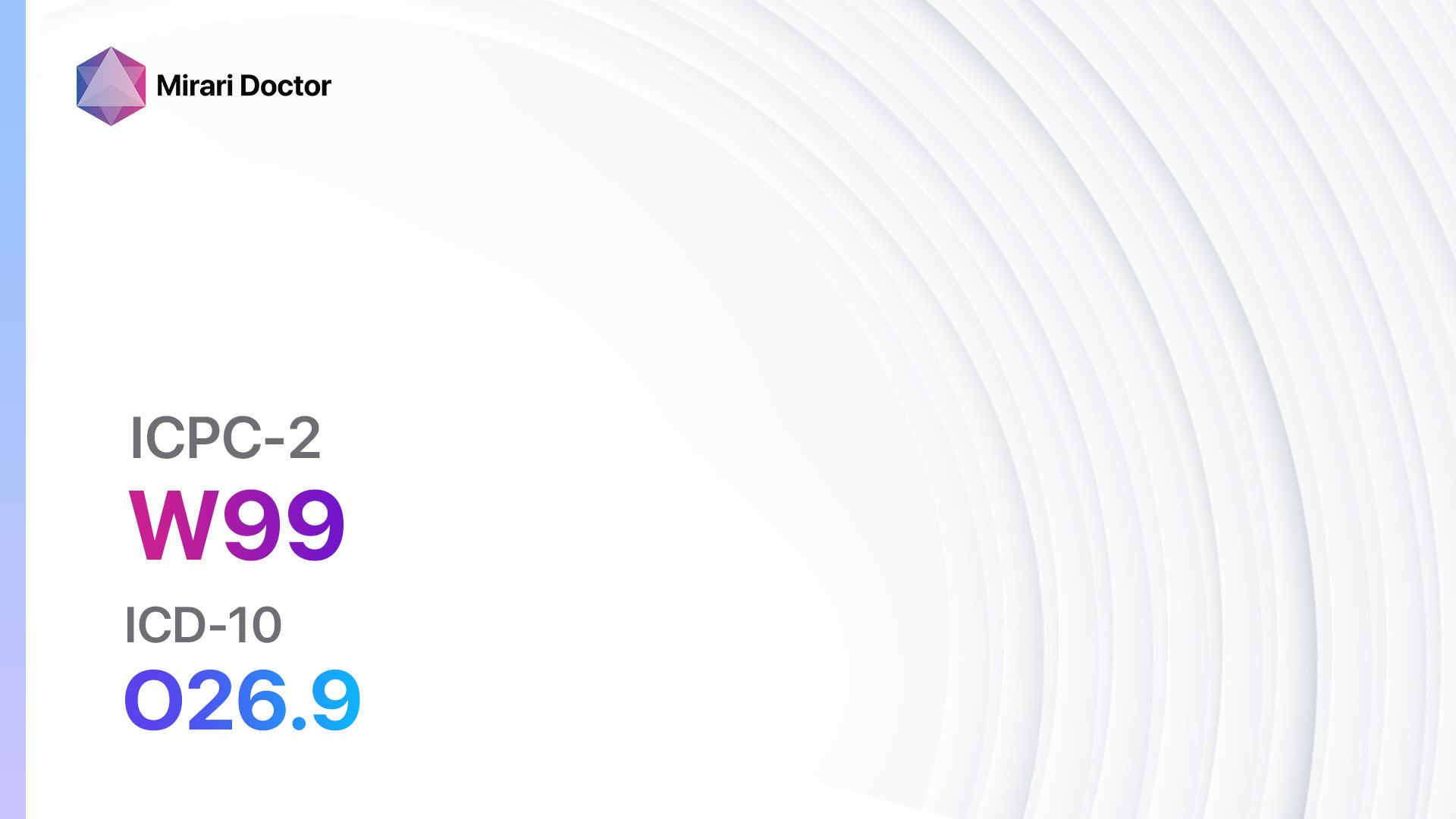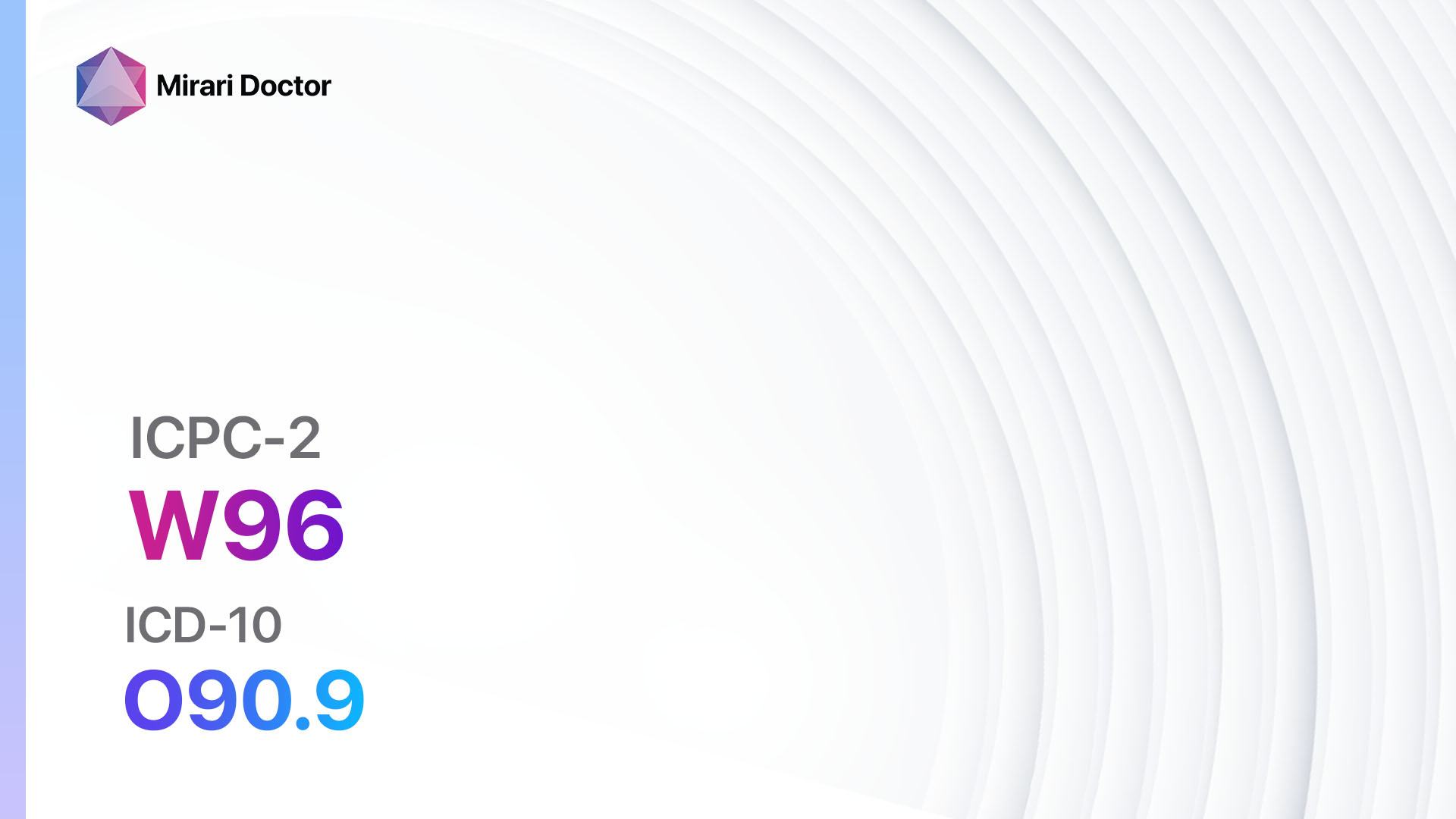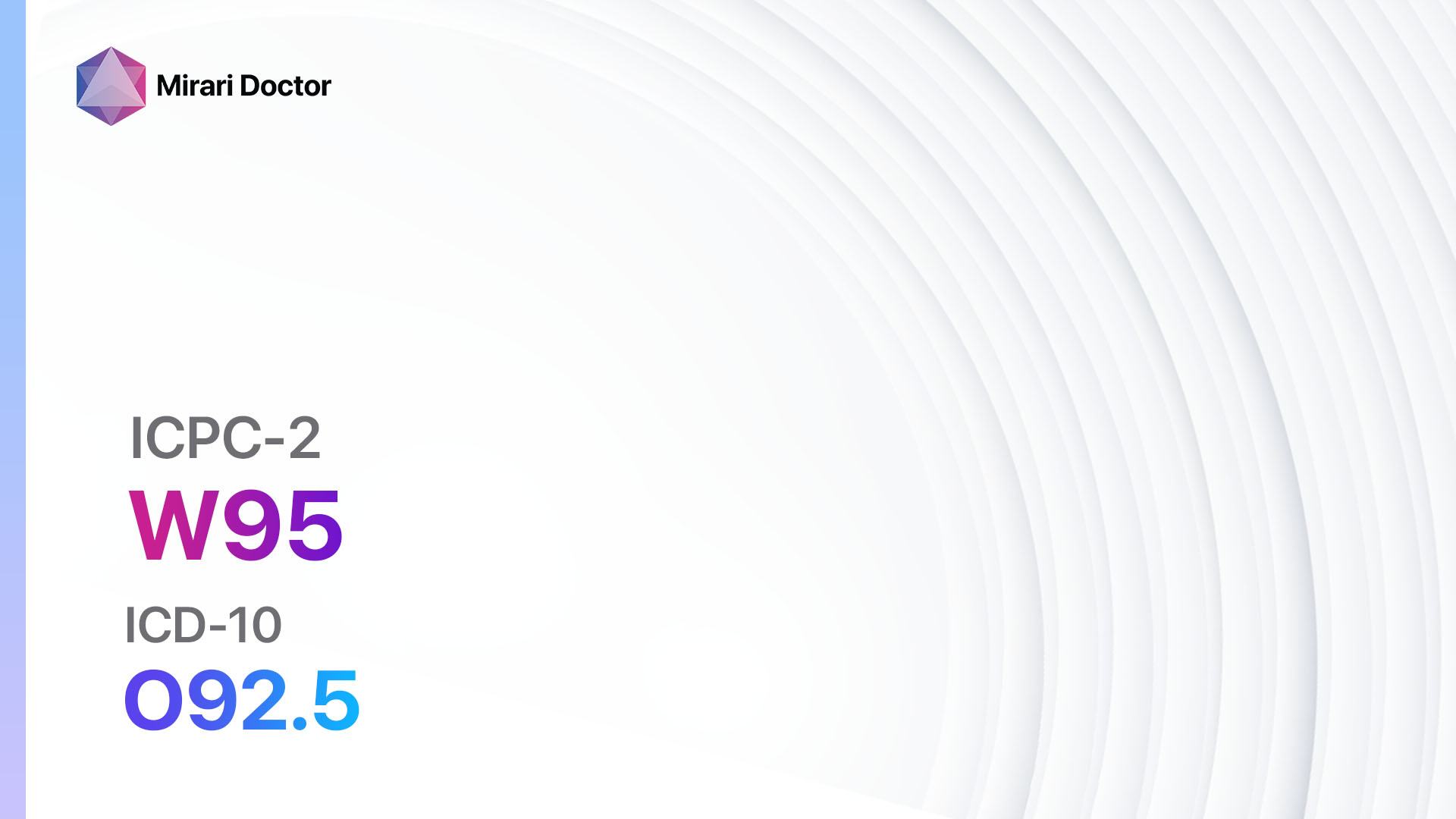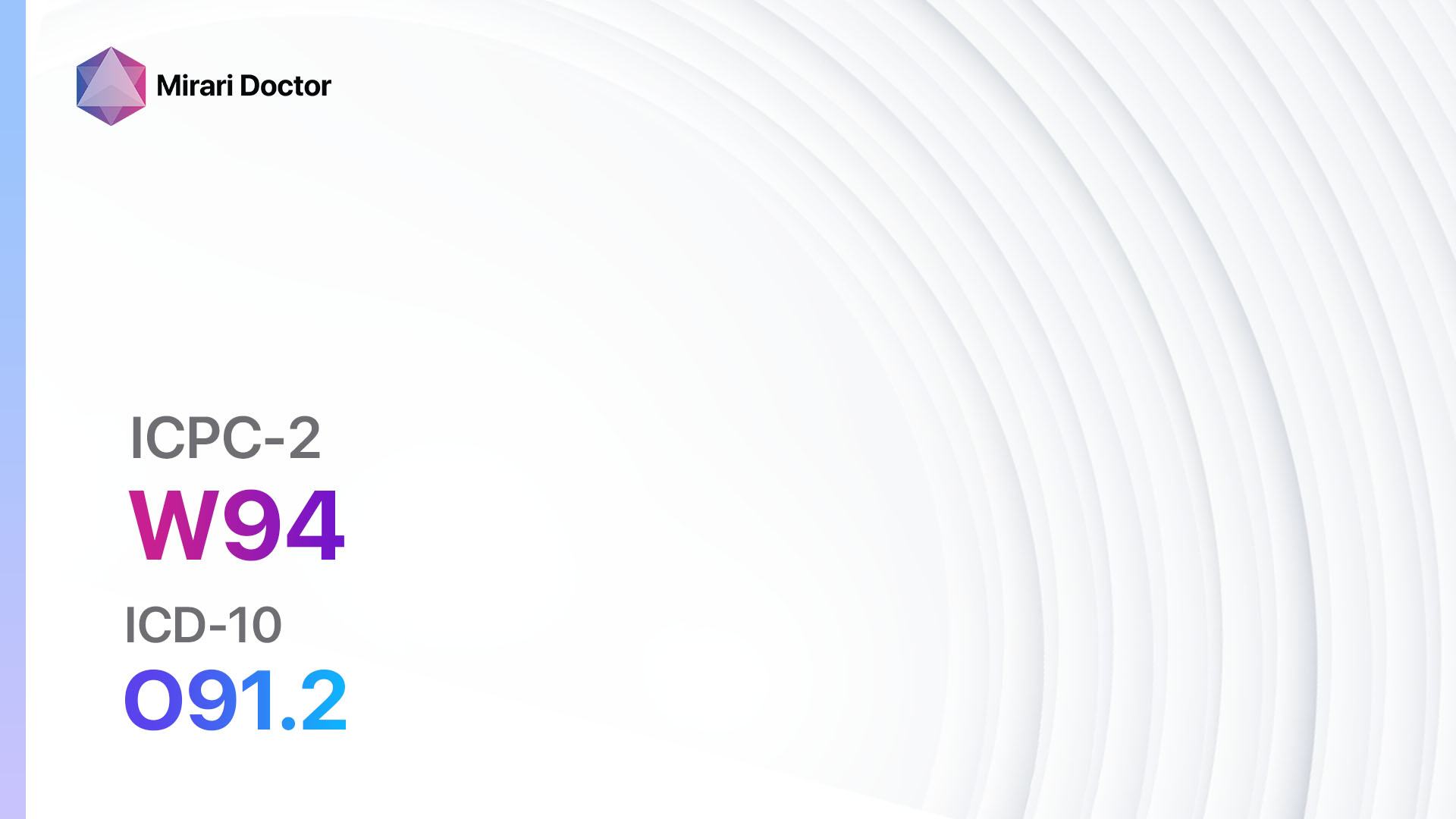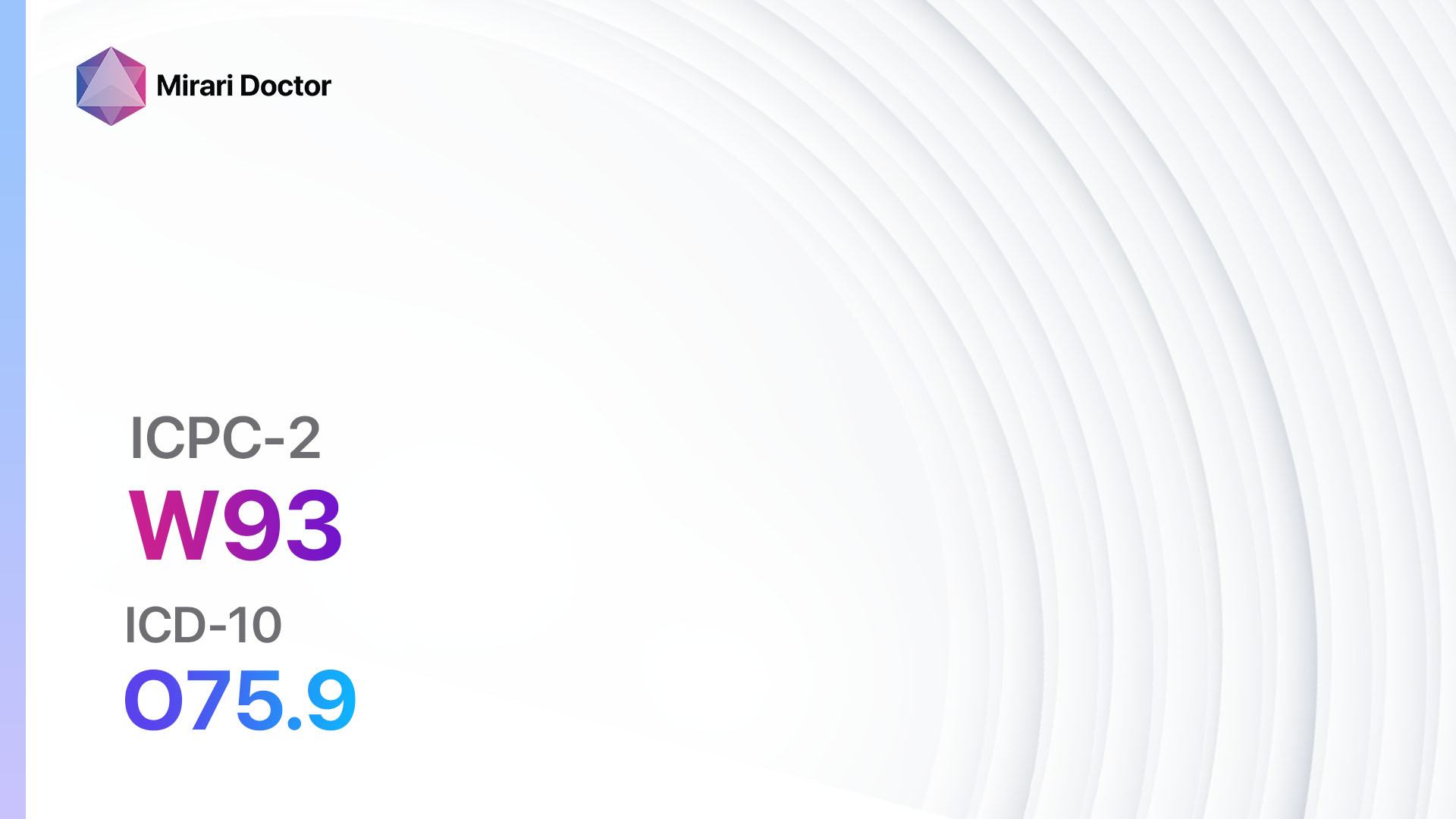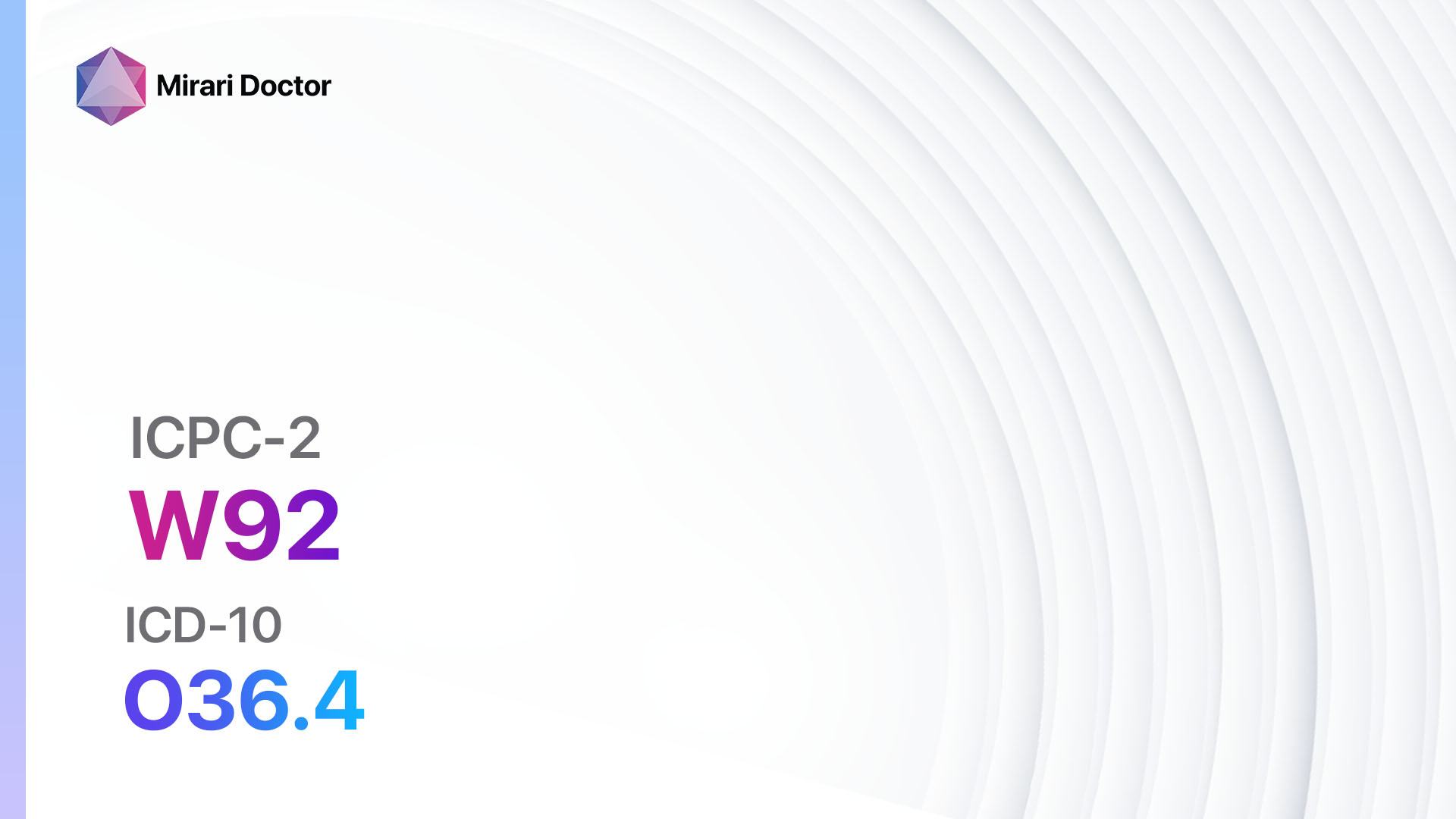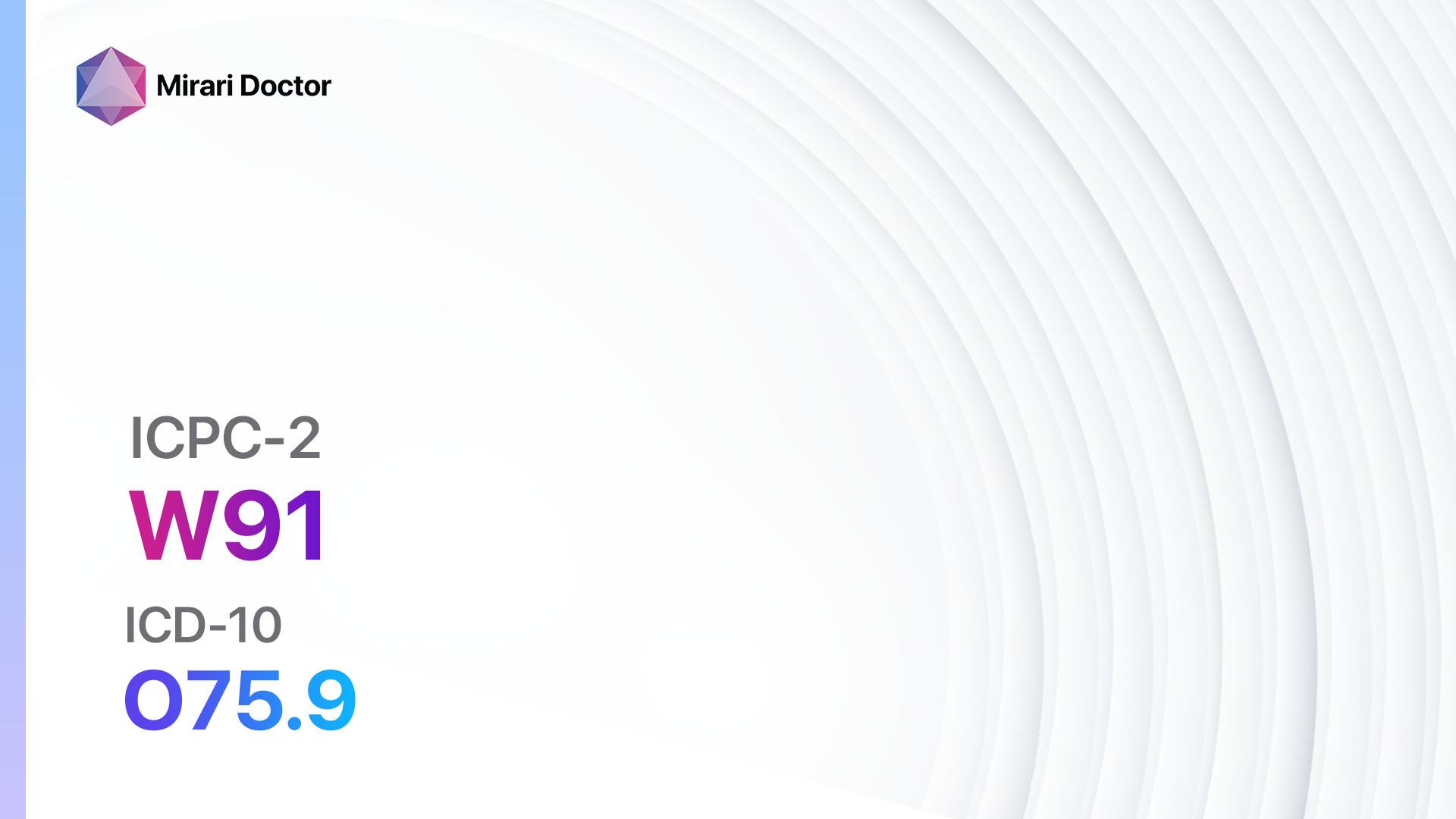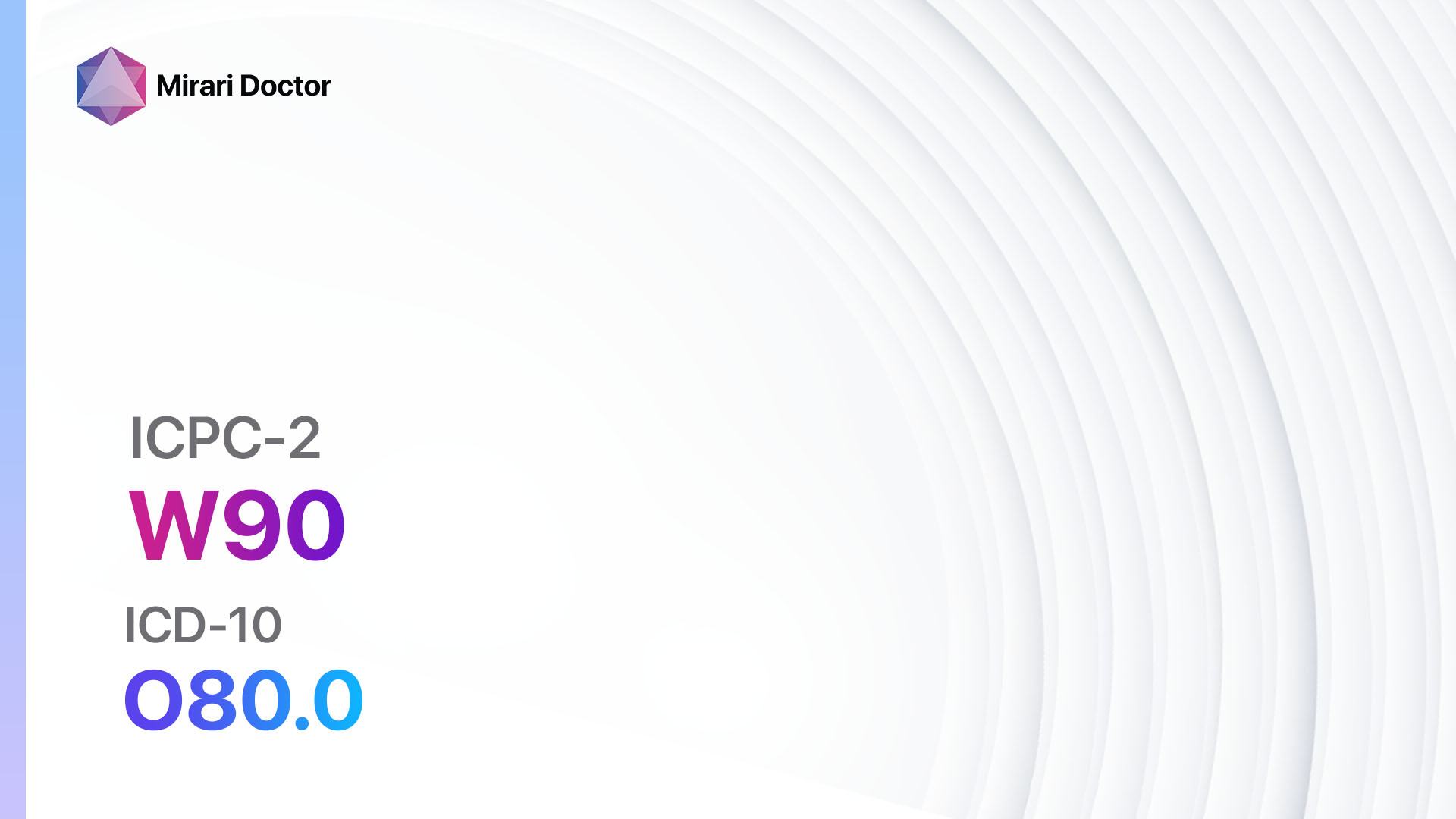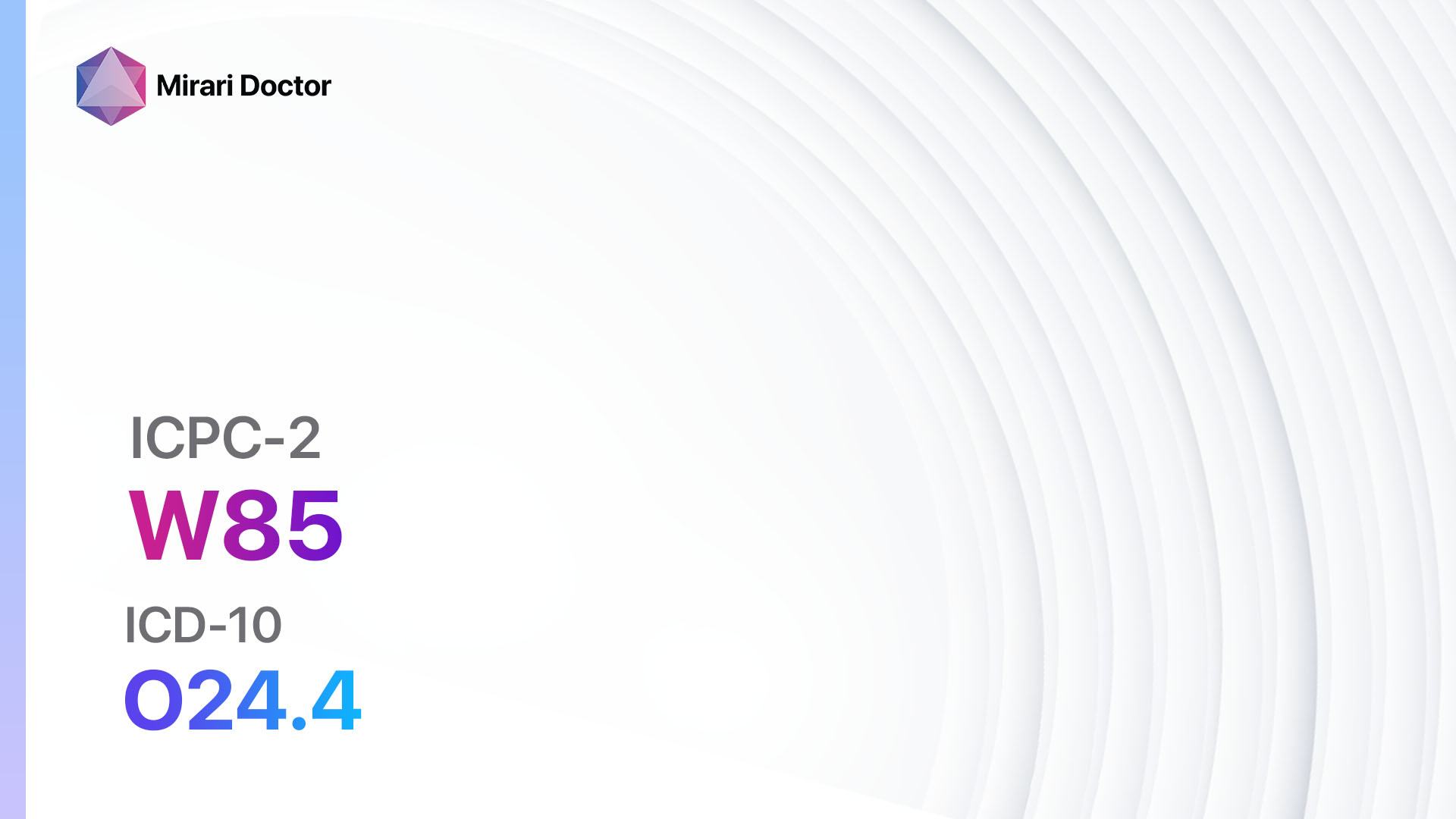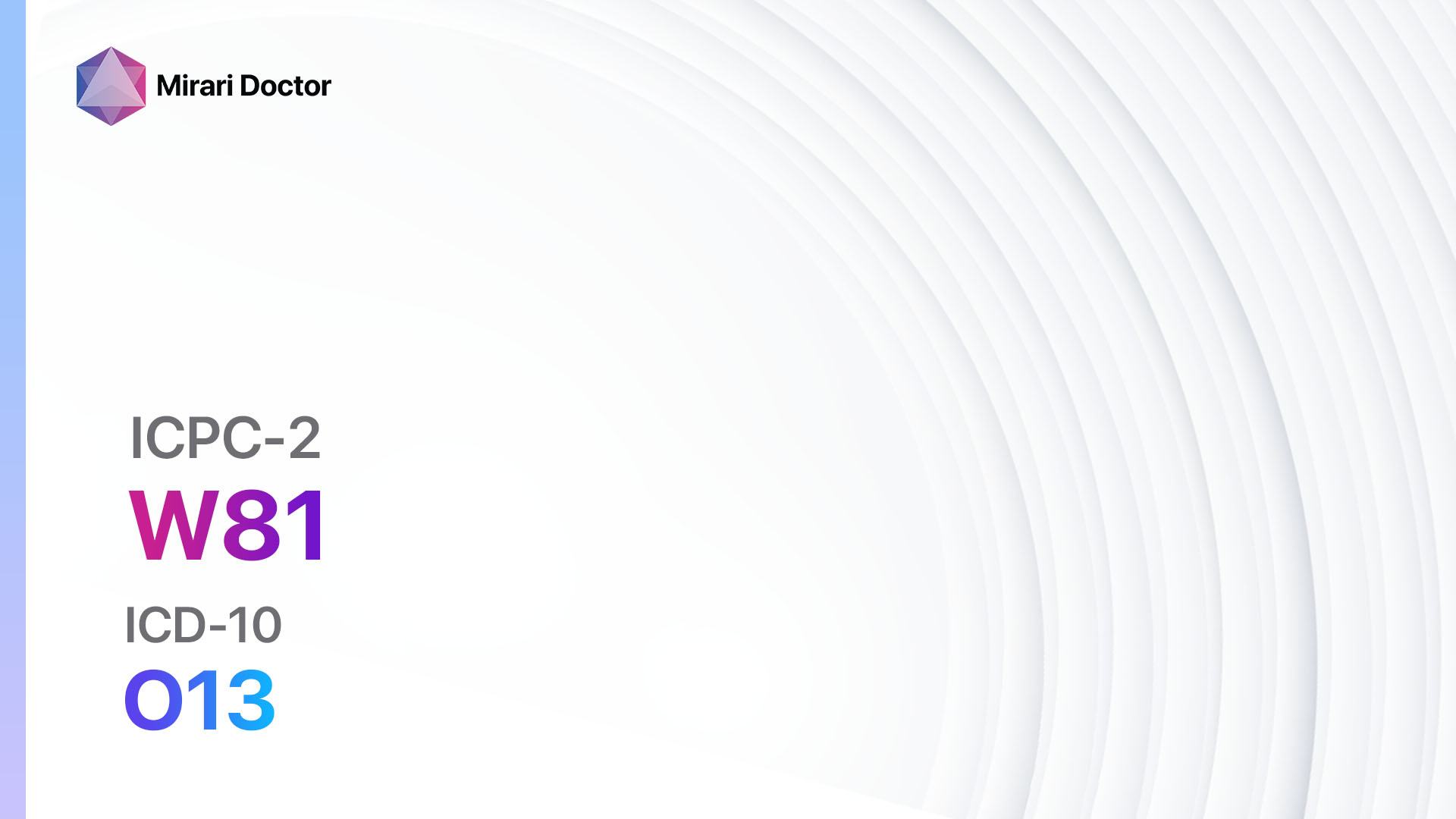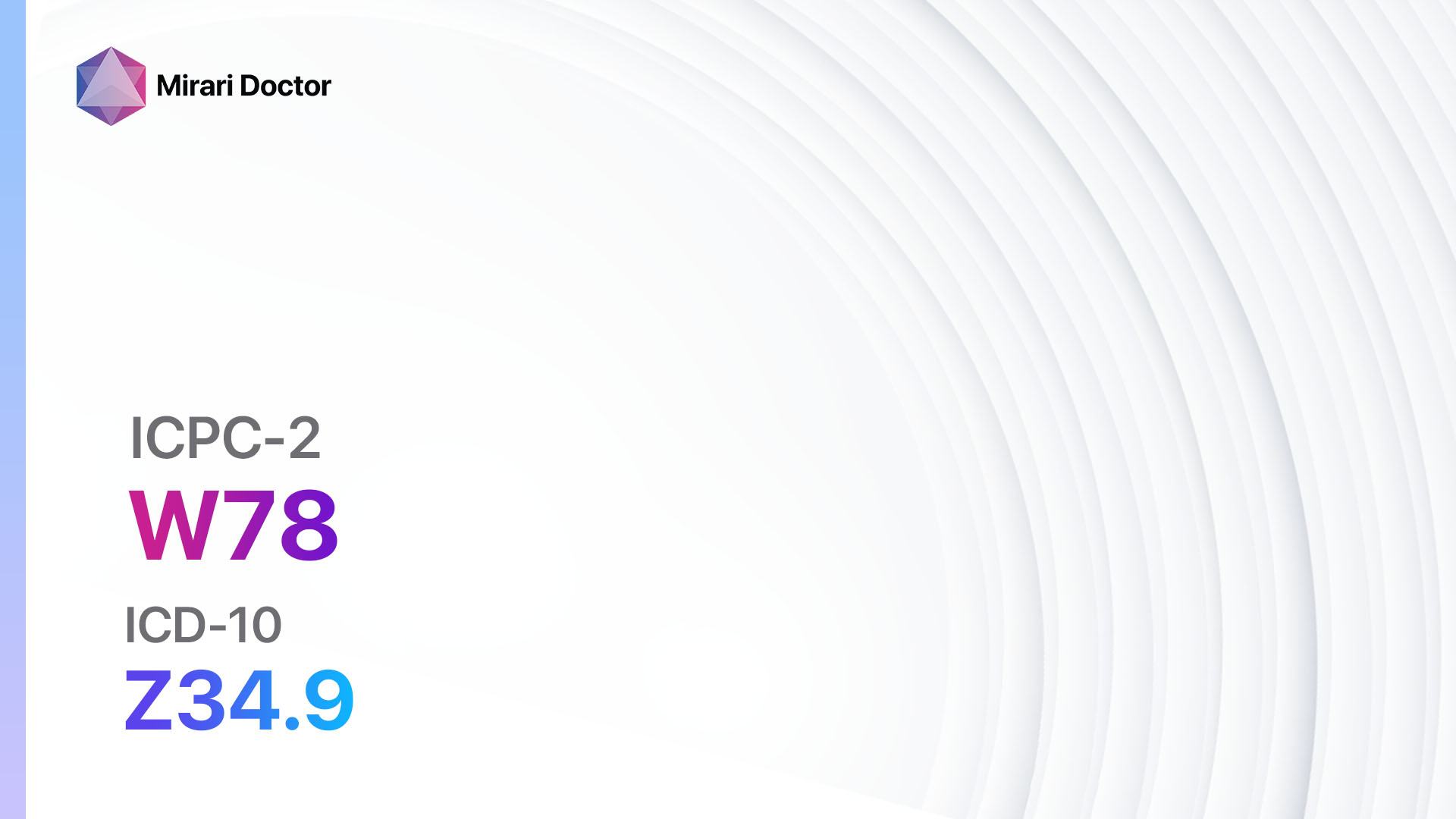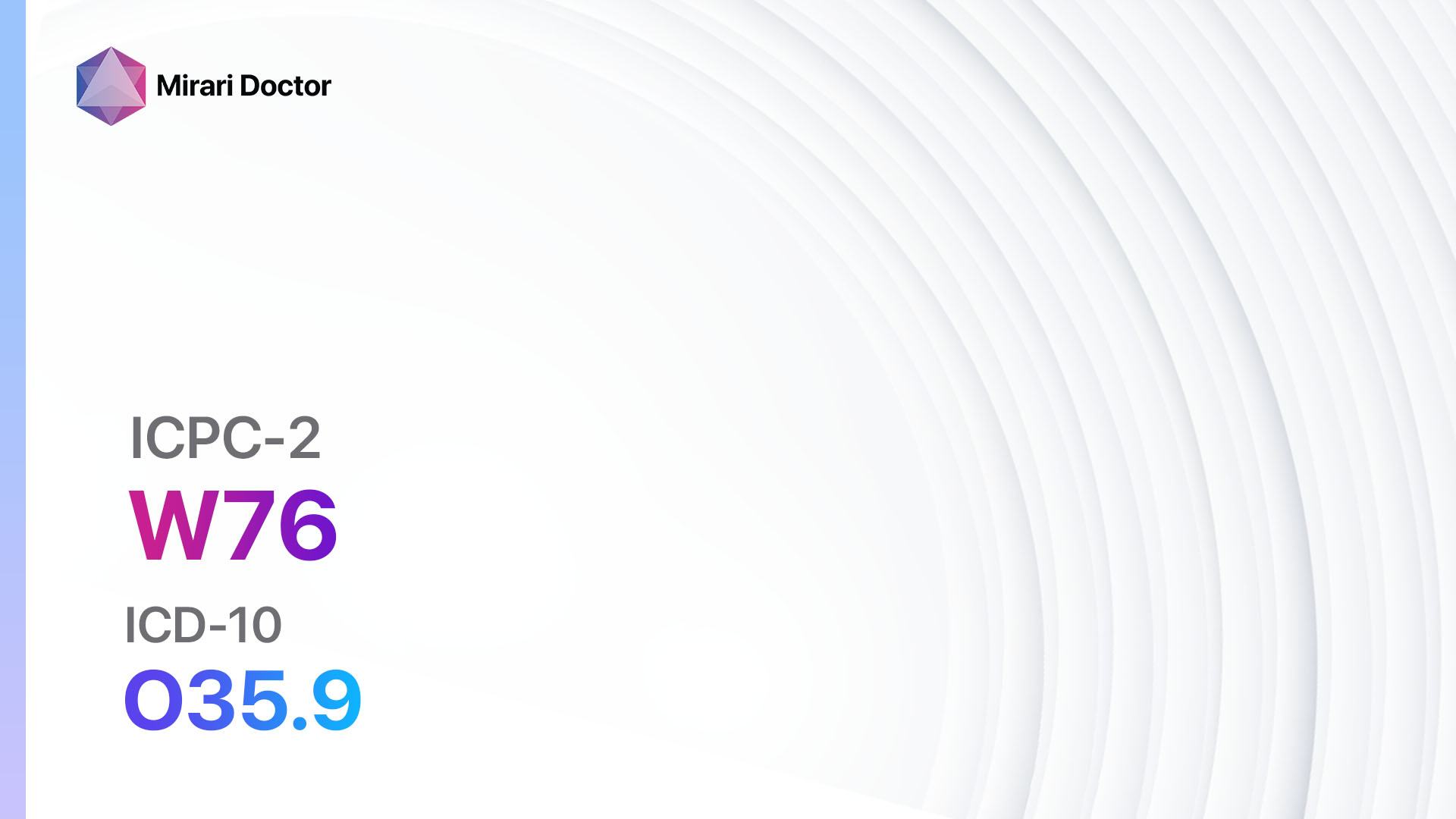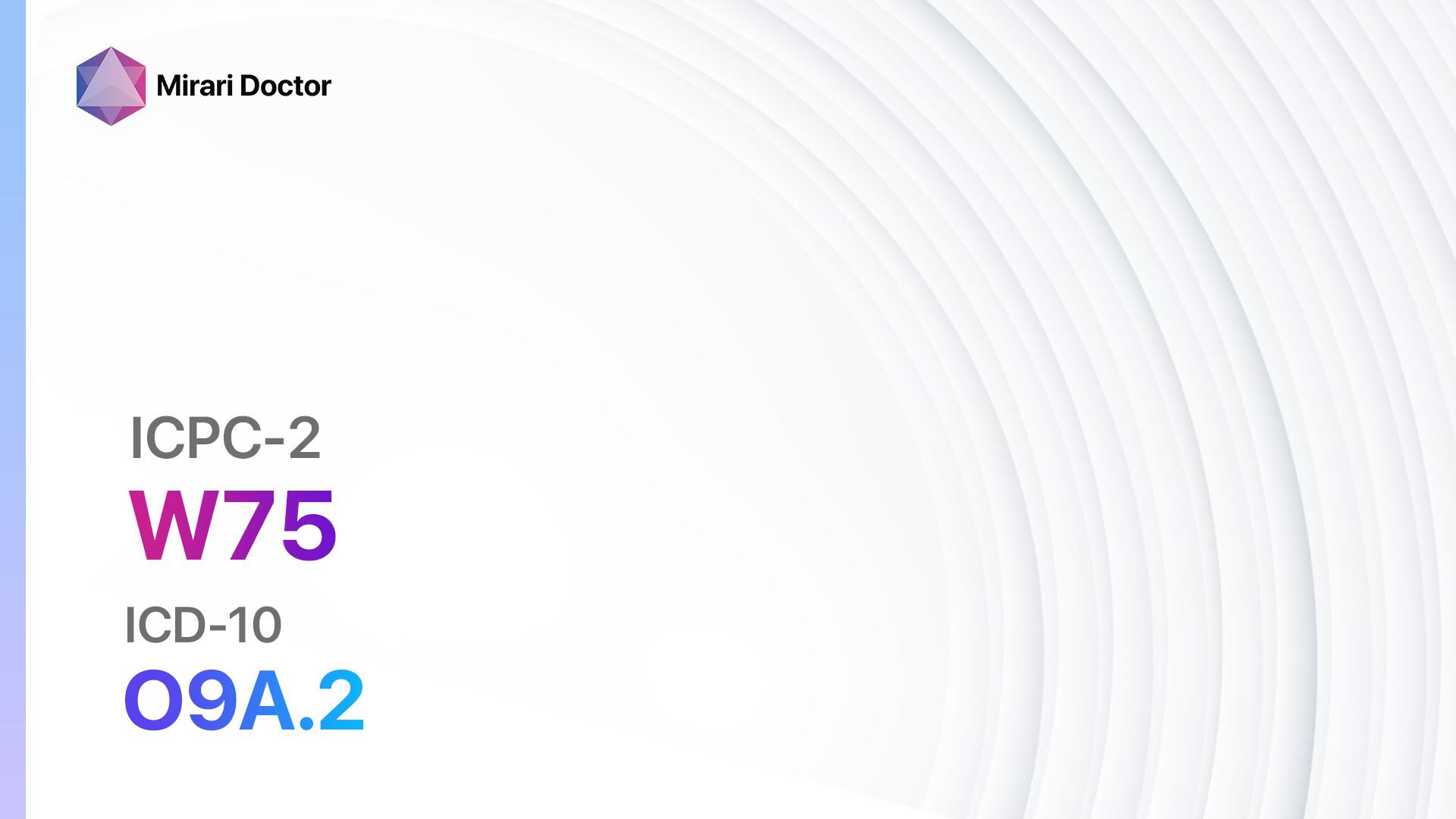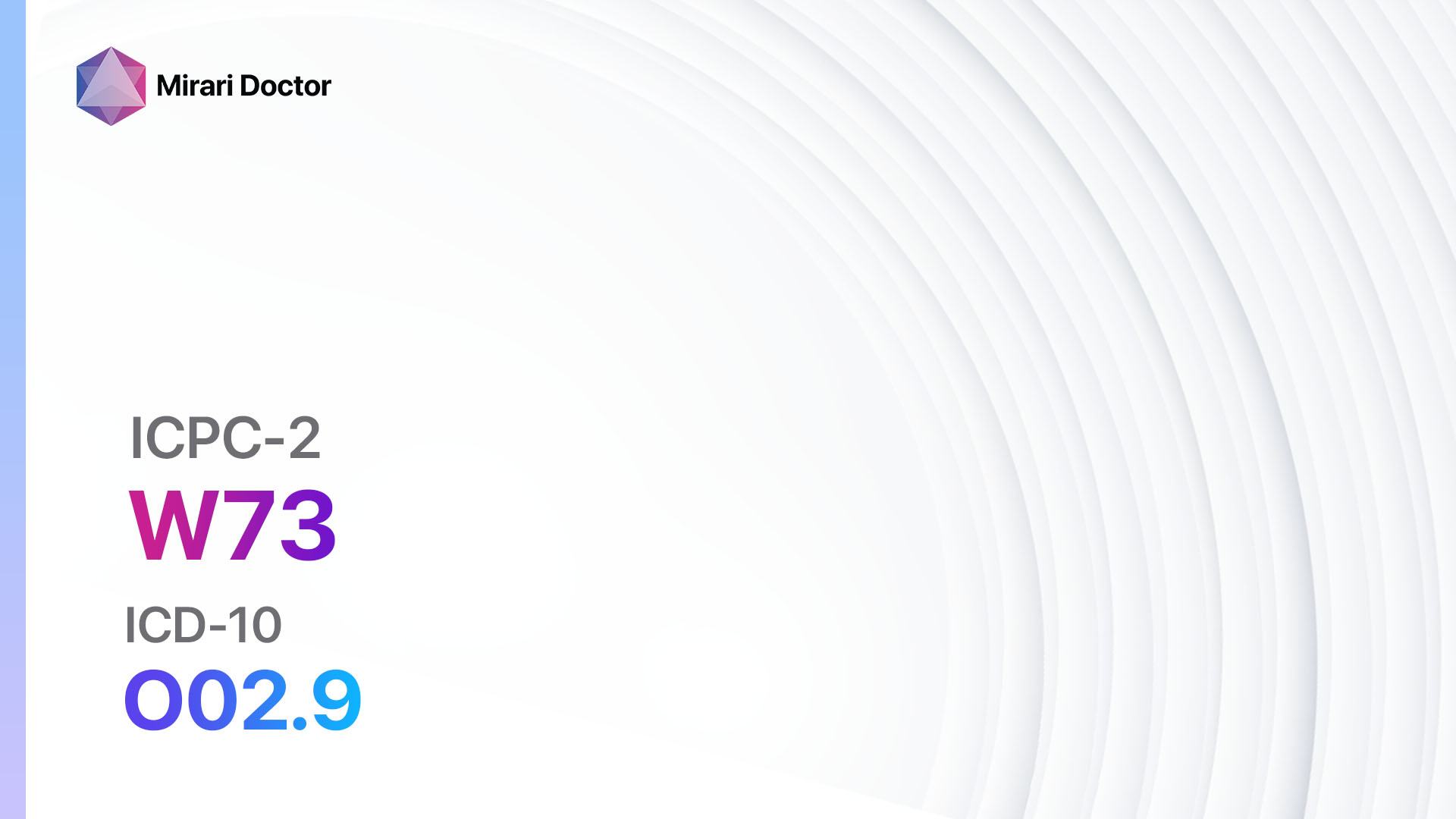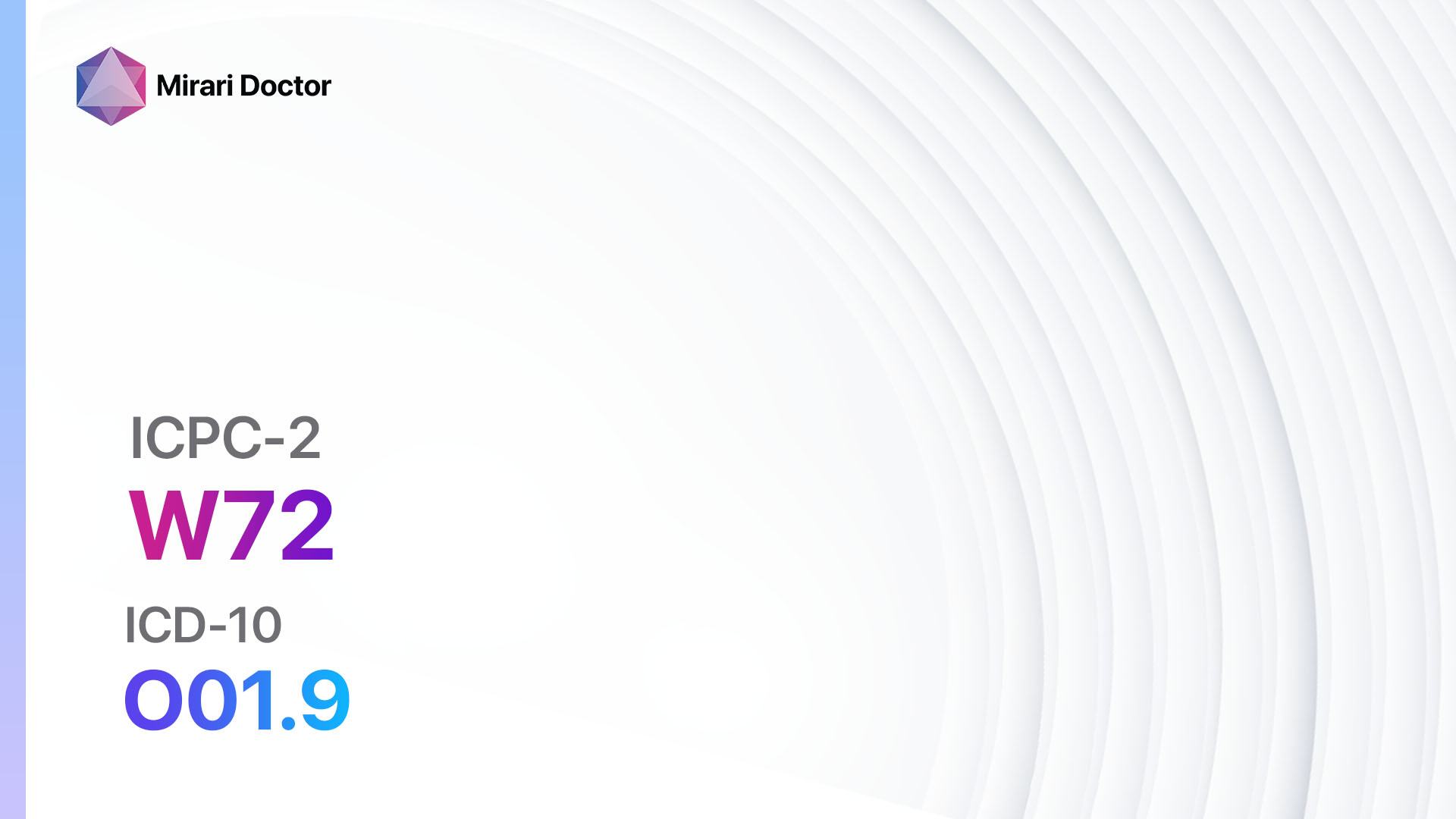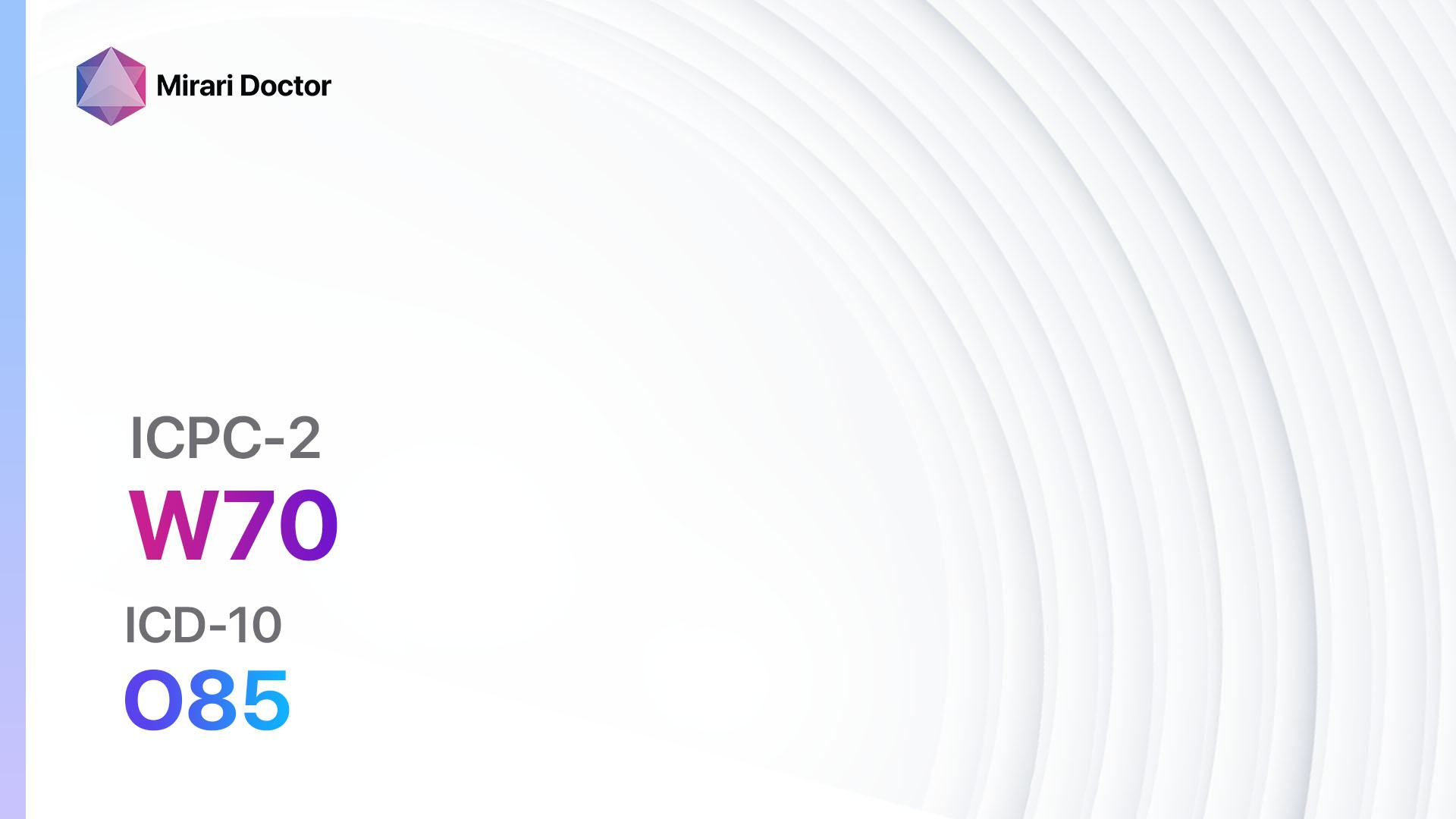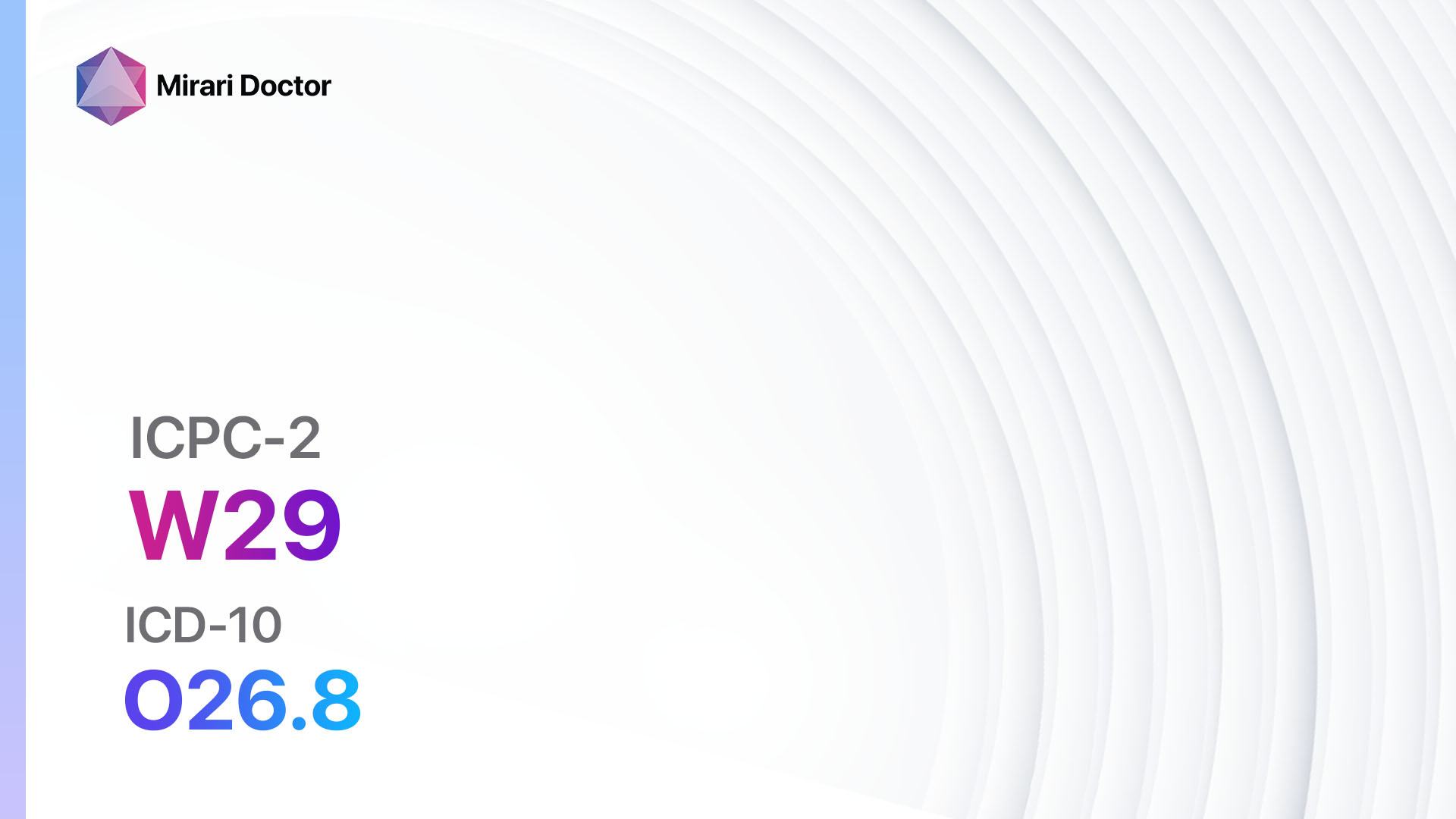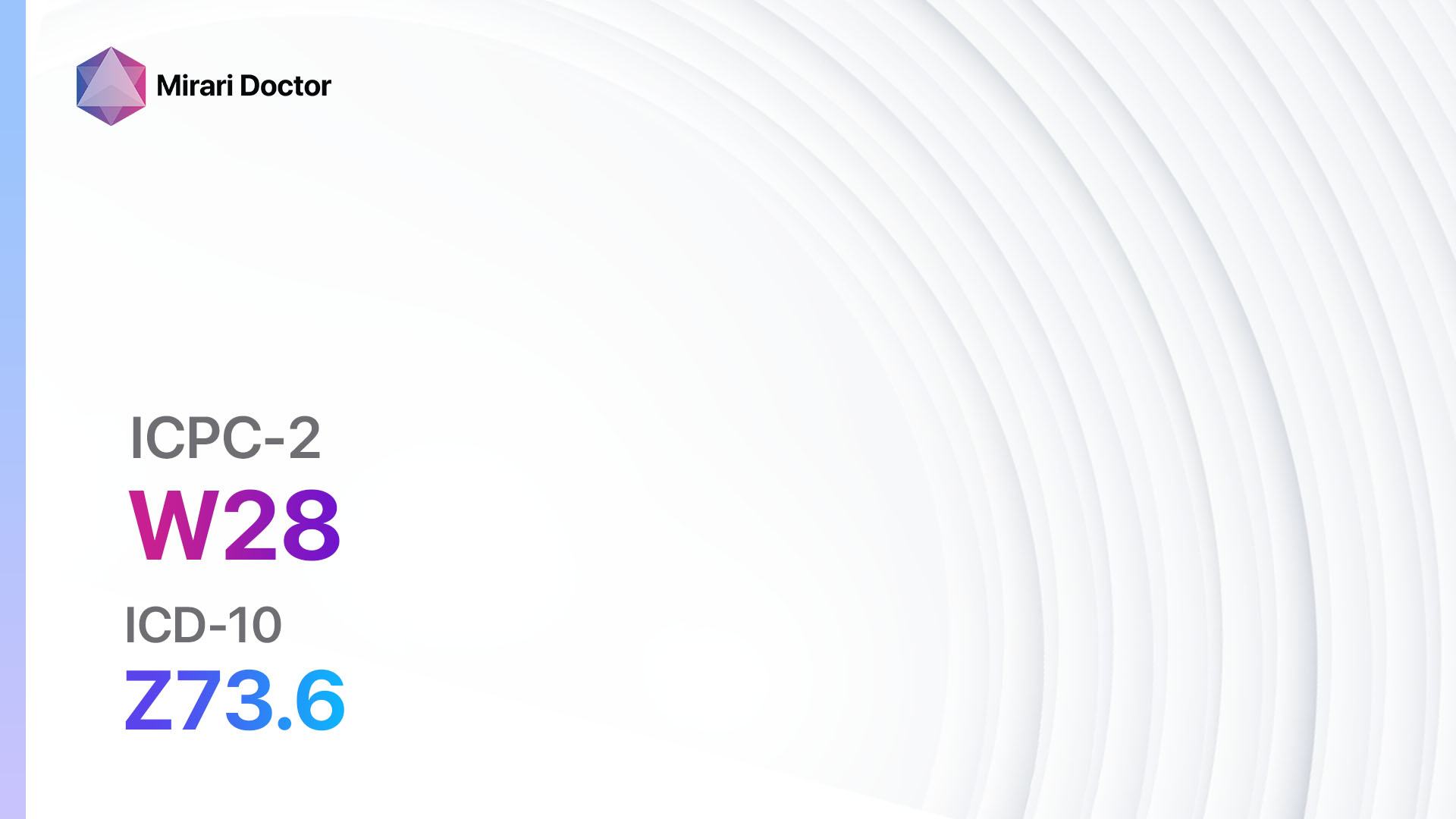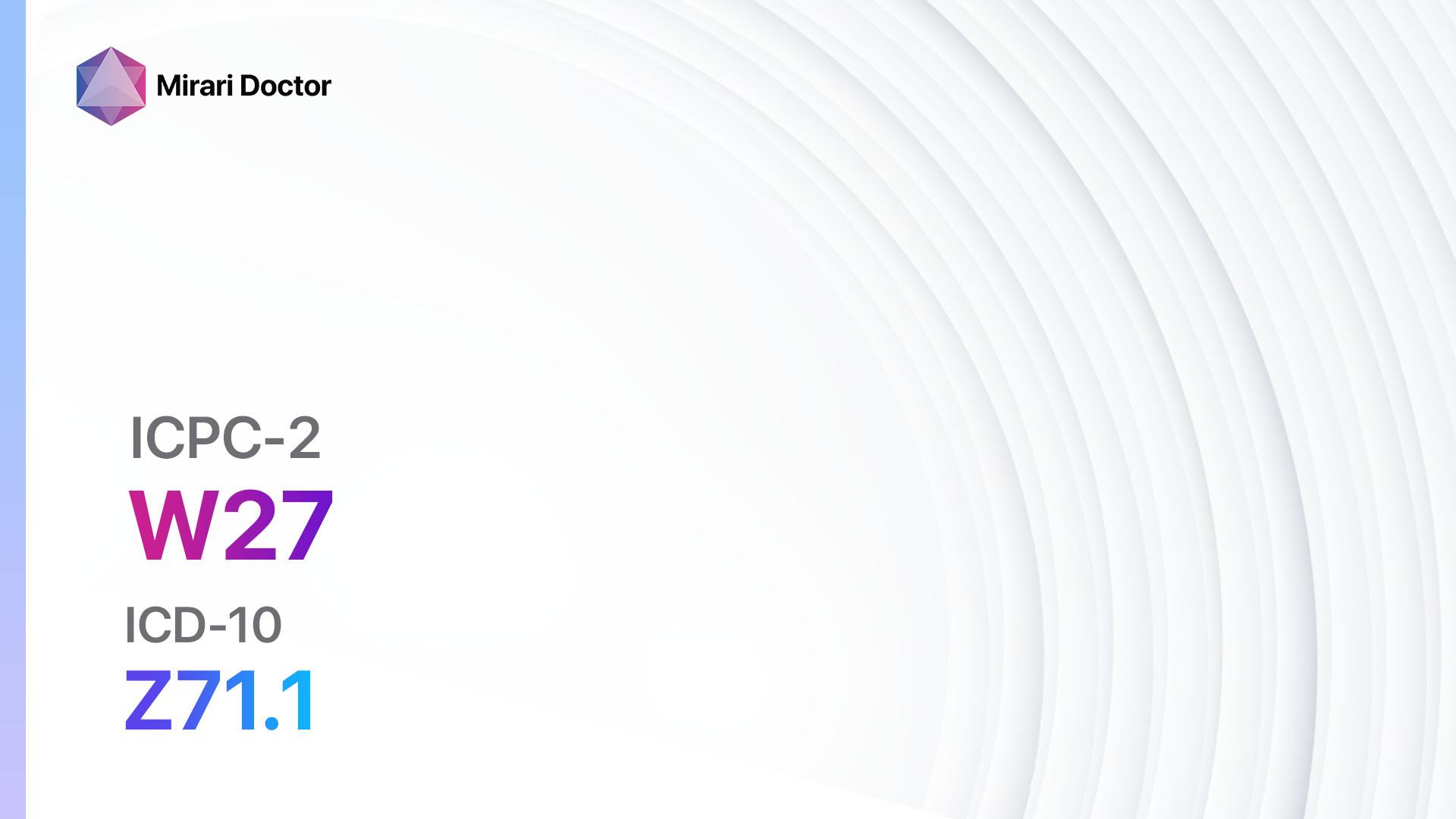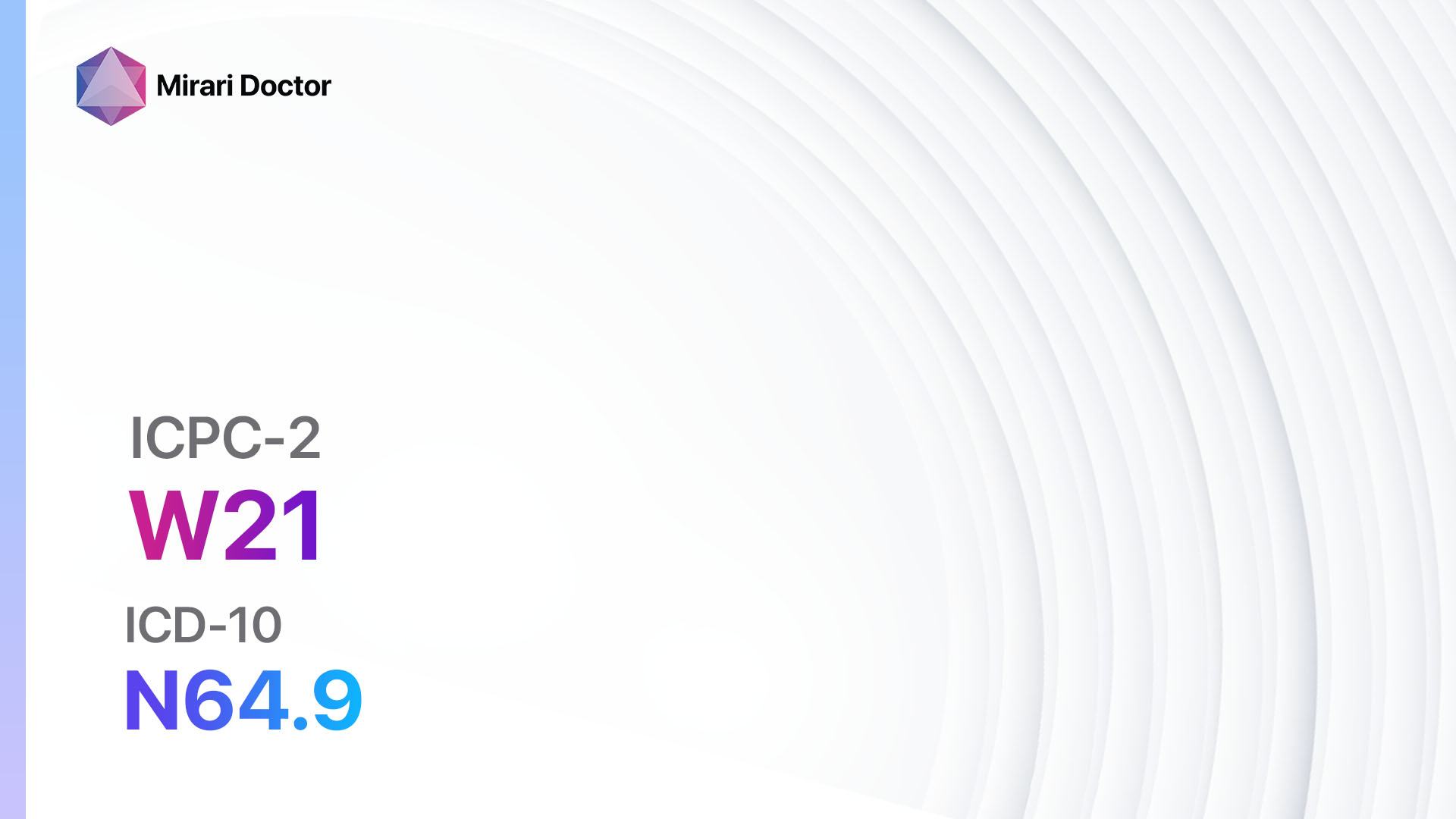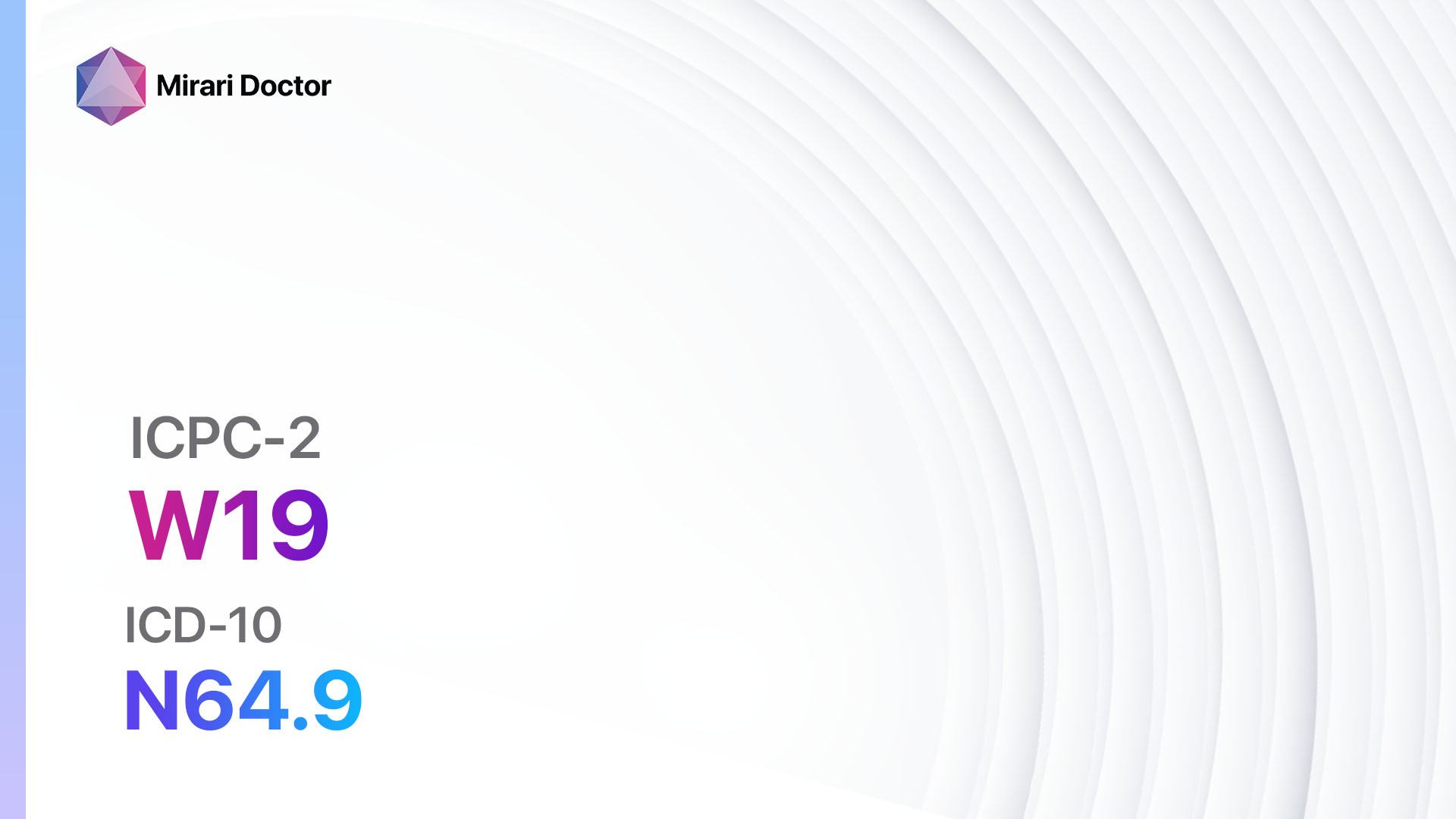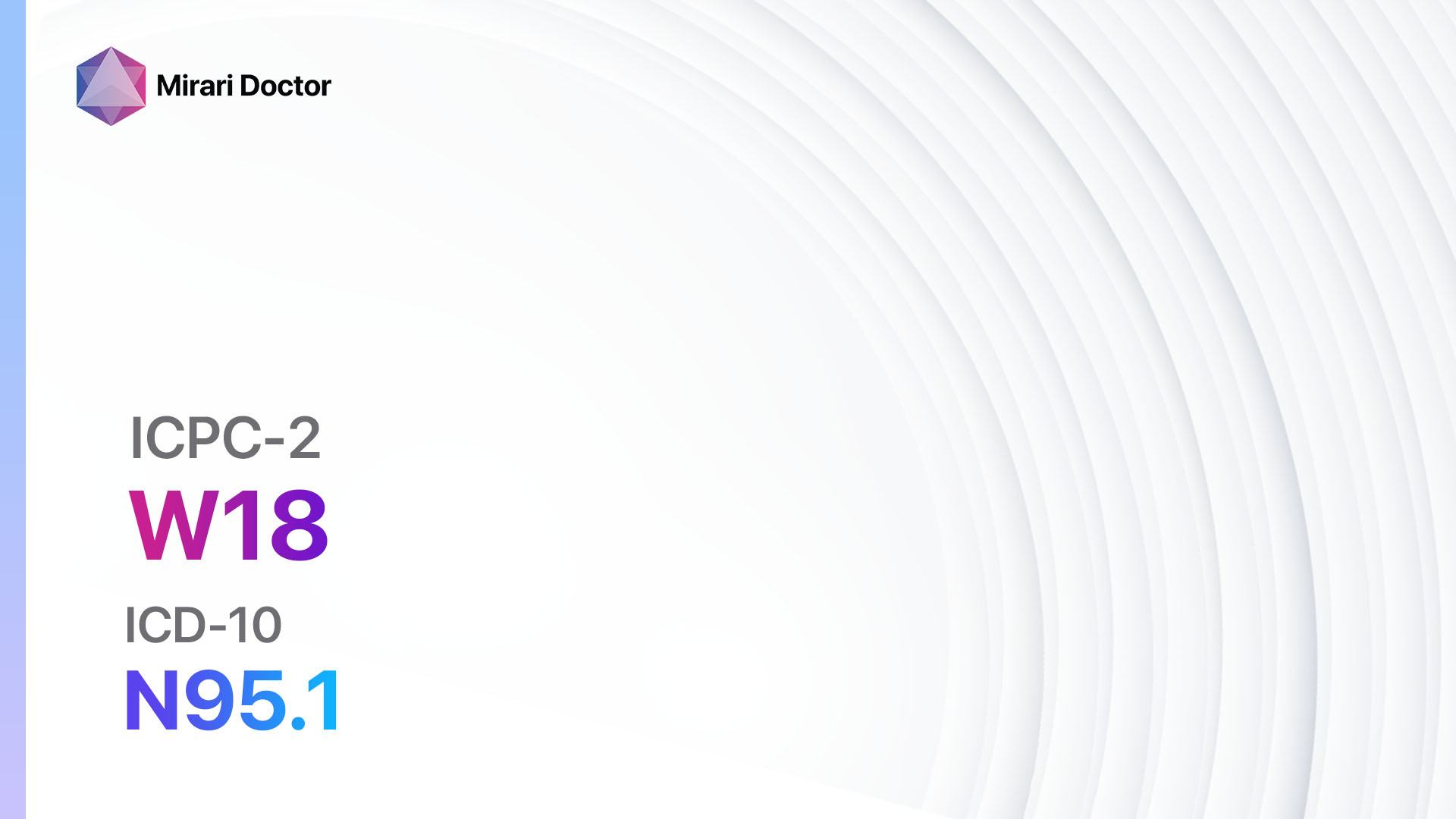
Introduction
Post-partum symptoms and complaints can vary greatly among women, and it is important to address any concerns or discomfort they may experience during this period[1]. This guide aims to provide healthcare professionals with a comprehensive approach to diagnosing and managing post-partum symptoms and complaints other than those specifically categorized under ICPC-2 code W18. By understanding the symptoms, causes, and appropriate diagnostic steps, healthcare professionals can effectively intervene and provide appropriate care to women experiencing post-partum symptoms.
Codes
- ICPC-2 Code: W18 Postmenopausal symptom/complaint
- ICD-10 Code: N95.1 Menopausal and female climacteric states[2]
Symptoms
- Vaginal bleeding: Women may experience vaginal bleeding after giving birth, which is known as lochia. It is important to assess the amount, color, and duration of bleeding to determine if it is within normal limits[3].
- Breast discomfort: Women may experience breast engorgement, nipple soreness, or mastitis (inflammation of the breast tissue) during the post-partum period[4].
- Perineal pain: Women who have had a vaginal delivery may experience perineal pain or discomfort due to tears or episiotomy[5].
- Urinary problems: Women may experience urinary incontinence, frequent urination, or difficulty emptying the bladder after giving birth[6].
- Bowel problems: Women may experience constipation or hemorrhoids after giving birth.
- Fatigue: Fatigue is common during the post-partum period due to hormonal changes, sleep deprivation, and the demands of caring for a newborn.
- Emotional changes: Women may experience mood swings, anxiety, or post-partum depression during this period[7].
Causes
- Hormonal changes: The sudden drop in estrogen and progesterone levels after childbirth can contribute to various post-partum symptoms[8].
- Physical trauma: The process of childbirth can cause physical trauma to the body, leading to symptoms such as perineal pain or vaginal bleeding.
- Breastfeeding: Breastfeeding can contribute to breast discomfort, engorgement, or mastitis[9].
- Sleep deprivation: The demands of caring for a newborn can result in sleep deprivation, leading to fatigue and emotional changes.
- Emotional factors: The hormonal changes and adjustment to motherhood can contribute to emotional changes, including mood swings and post-partum depression[10].
Diagnostic Steps
Medical History
- Obtain a detailed medical history, including the duration and severity of symptoms, any previous medical conditions, and any risk factors for post-partum complications.
- Ask about the woman’s birth experience, including the type of delivery and any complications during childbirth.
- Inquire about the woman’s breastfeeding practices and any difficulties or concerns she may have.
- Assess the woman’s emotional well-being and screen for post-partum depression or anxiety.
Physical Examination
- Perform a thorough physical examination, including an assessment of the breasts for engorgement, tenderness, or signs of mastitis.
- Examine the perineal area for any signs of trauma, such as tears or episiotomy wounds.
- Assess the abdomen for any abnormalities or tenderness.
- Evaluate the woman’s vital signs, including blood pressure, heart rate, and temperature.
Laboratory Tests
- Complete blood count (CBC): A CBC can help assess for any signs of infection or anemia.
- Urinalysis: A urinalysis can help identify any urinary tract infections or other urinary abnormalities.
- Breast milk culture: If mastitis is suspected, a breast milk culture can help identify the causative organism and guide antibiotic therapy.
Diagnostic Imaging
- Ultrasound: An ultrasound may be indicated to evaluate the uterus, ovaries, or breasts for any abnormalities or complications.
- X-ray or MRI: In certain cases, an X-ray or MRI may be necessary to assess for any structural abnormalities or complications.
Other Tests
- Pelvic floor assessment: A pelvic floor assessment may be performed to evaluate for any pelvic floor dysfunction or weakness contributing to urinary or bowel problems.
- Psychological assessment: If post-partum depression or anxiety is suspected, a psychological assessment may be necessary to determine the severity and appropriate treatment.
Follow-up and Patient Education
- Schedule a follow-up appointment to monitor the woman’s progress and address any ongoing concerns or symptoms.
- Provide education on self-care measures, such as proper breast care, perineal care, and techniques for managing urinary or bowel problems.
- Offer resources and support for post-partum emotional well-being, including information on post-partum support groups or counseling services.
Possible Interventions
Traditional Interventions
Medications:
Top 5 drugs for post-partum symptoms/complaints other than ICPC-2 code W18:
- Ibuprofen:
- Cost: Generic versions can be $3-$10 for a 30-day supply.
- Contraindications: History of gastrointestinal bleeding, renal impairment, or allergy to nonsteroidal anti-inflammatory drugs (NSAIDs).
- Side effects: Upset stomach, heartburn, dizziness.
- Severe side effects: Gastrointestinal bleeding, kidney damage.
- Drug interactions: Aspirin, other NSAIDs, blood thinners.
- Warning: Use with caution in patients with a history of peptic ulcer disease or cardiovascular disease.
- Acetaminophen:
- Cost: Generic versions can be $3-$10 for a 30-day supply.
- Contraindications: Severe liver disease or allergy to acetaminophen.
- Side effects: Rare at therapeutic doses.
- Severe side effects: Liver damage (with excessive doses).
- Drug interactions: Alcohol, certain antibiotics.
- Warning: Avoid exceeding the recommended dose to prevent liver damage.
- Topical analgesics (e.g., lidocaine gel):
- Cost: Varies depending on the brand and quantity.
- Contraindications: Allergy to local anesthetics.
- Side effects: Local skin irritation or allergic reactions.
- Severe side effects: Rare.
- Drug interactions: None reported.
- Warning: Use as directed and avoid contact with eyes or broken skin.
- Stool softeners (e.g., docusate sodium):
- Cost: Generic versions can be $3-$10 for a 30-day supply.
- Contraindications: Intestinal obstruction or allergy to docusate sodium.
- Side effects: Upset stomach, diarrhea.
- Severe side effects: Rare.
- Drug interactions: None reported.
- Warning: Use as directed and drink plenty of fluids.
- Antibiotics (e.g., dicloxacillin, cephalexin):
- Cost: Generic versions can be $5-$20 for a 10-day supply.
- Contraindications: Allergy to penicillin or cephalosporins.
- Side effects: Upset stomach, diarrhea.
- Severe side effects: Severe allergic reactions.
- Drug interactions: None reported.
- Warning: Take the full course of antibiotics as prescribed.
Alternative Drugs:
- Herbal remedies: Some herbal remedies, such as chamomile or lavender, may provide relief for certain post-partum symptoms. Cost: Varies depending on the specific herb and brand.
- Homeopathic remedies: Homeopathic remedies, such as Arnica montana for perineal pain, may be considered. Cost: Varies depending on the specific remedy and brand.
- Essential oils: Certain essential oils, such as lavender or tea tree oil, may have soothing properties for post-partum symptoms. Cost: Varies depending on the specific oil and brand.
Surgical Procedures:
In general, surgical procedures are not commonly indicated for post-partum symptoms/complaints other than ICPC-2 code W18. However, in rare cases where complications arise, surgical interventions may be necessary. The cost of surgical procedures can vary significantly depending on the specific procedure and location.
Alternative Interventions
- Acupuncture: May help alleviate pain, promote relaxation, and improve overall well-being. Cost: $60-$120 per session.
- Chiropractic care: Can assist with musculoskeletal issues, such as back pain or pelvic misalignment. Cost: $50-$200 per session.
- Physical therapy: May be beneficial for pelvic floor rehabilitation, addressing urinary or bowel problems. Cost: $75-$150 per session.
- Massage therapy: Can provide relaxation, pain relief, and improved circulation. Cost: $60-$120 per session.
- Yoga or meditation: May help reduce stress, improve mood, and promote overall well-being. Cost: Varies depending on the location and type of class.
Lifestyle Interventions
- Rest and sleep: Encourage adequate rest and sleep to promote healing and recovery. Cost: None.
- Healthy diet: Emphasize the importance of a balanced diet to support overall well-being and recovery. Cost: Varies depending on food choices.
- Hydration: Encourage adequate fluid intake to prevent dehydration and promote healing. Cost: None.
- Gentle exercise: Recommend gentle exercises, such as walking or post-partum yoga, to promote circulation and overall well-being. Cost: None or minimal.
- Stress management: Provide resources and techniques for stress management, such as deep breathing exercises or mindfulness practices. Cost: None or minimal.
It is important to note that the cost ranges provided are approximate and may vary depending on the location and availability of the interventions. Healthcare professionals should consider the individual needs and preferences of each patient when recommending interventions and provide appropriate education and support.
Mirari Cold Plasma Alternative Intervention
Understanding Mirari Cold Plasma
- Safe and Non-Invasive Treatment: Mirari Cold Plasma is a safe and non-invasive treatment option for various skin conditions. It does not require incisions, minimizing the risk of scarring, bleeding, or tissue damage.
- Efficient Extraction of Foreign Bodies: Mirari Cold Plasma facilitates the removal of foreign bodies from the skin by degrading and dissociating organic matter, allowing easier access and extraction.
- Pain Reduction and Comfort: Mirari Cold Plasma has a local analgesic effect, providing pain relief during the treatment, making it more comfortable for the patient.
- Reduced Risk of Infection: Mirari Cold Plasma has antimicrobial properties, effectively killing bacteria and reducing the risk of infection.
- Accelerated Healing and Minimal Scarring: Mirari Cold Plasma stimulates wound healing and tissue regeneration, reducing healing time and minimizing the formation of scars.
Mirari Cold Plasma Prescription
Video instructions for using Mirari Cold Plasma Device – W18 Postmenopausal symptom/complaint (ICD-10:N95.1)
| Mild | Moderate | Severe |
| Mode setting: 2 (Wound Healing) Location: 2 (Prostate & Uterus) Morning: 15 minutes, Evening: 15 minutes |
Mode setting: 2 (Wound Healing) Location: 2 (Prostate & Uterus) Morning: 30 minutes, Lunch: 30 minutes, Evening: 30 minutes |
Mode setting: 2 (Wound Healing) Location: 2 (Prostate & Uterus) Morning: 30 minutes, Lunch: 30 minutes, Evening: 30 minutes |
| Mode setting: 7 (Immunotherapy) Location: 1 (Sacrum) Morning: 15 minutes, Evening: 15 minutes |
Mode setting: 7 (Immunotherapy) Location: 1 (Sacrum) Morning: 30 minutes, Lunch: 30 minutes, Evening: 30 minutes |
Mode setting: 7 (Immunotherapy) Location: 1 (Sacrum) Morning: 30 minutes, Lunch: 30 minutes, Evening: 30 minutes |
| Total Morning: 30 minutes approx. $5 USD, Evening: 30 minutes approx. $5 USD |
Total Morning: 60 minutes approx. $10 USD, Lunch: 60 minutes approx. $10 USD, Evening: 60 minutes approx. $10 USD, |
Total Morning: 60 minutes approx. $10 USD, Lunch: 60 minutes approx. $10 USD, Evening: 60 minutes approx. $10 USD, |
| Usual treatment for 7-60 days approx. $70 USD – $600 USD | Usual treatment for 6-8 weeks approx. $1,260 USD – $1,680 USD |
Usual treatment for 3-6 months approx. $2,700 USD – $5,400 USD
|
 |
|
Use the Mirari Cold Plasma device to treat Post-partum symptom/complaint other effectively.
WARNING: MIRARI COLD PLASMA IS DESIGNED FOR THE HUMAN BODY WITHOUT ANY ARTIFICIAL OR THIRD PARTY PRODUCTS. USE OF OTHER PRODUCTS IN COMBINATION WITH MIRARI COLD PLASMA MAY CAUSE UNPREDICTABLE EFFECTS, HARM OR INJURY. PLEASE CONSULT A MEDICAL PROFESSIONAL BEFORE COMBINING ANY OTHER PRODUCTS WITH USE OF MIRARI.
Step 1: Cleanse the Skin
- Start by cleaning the affected area of the skin with a gentle cleanser or mild soap and water. Gently pat the area dry with a clean towel.
Step 2: Prepare the Mirari Cold Plasma device
- Ensure that the Mirari Cold Plasma device is fully charged or has fresh batteries as per the manufacturer’s instructions. Make sure the device is clean and in good working condition.
- Switch on the Mirari device using the power button or by following the specific instructions provided with the device.
- Some Mirari devices may have adjustable settings for intensity or treatment duration. Follow the manufacturer’s instructions to select the appropriate settings based on your needs and the recommended guidelines.
Step 3: Apply the Device
- Place the Mirari device in direct contact with the affected area of the skin. Gently glide or hold the device over the skin surface, ensuring even coverage of the area experiencing.
- Slowly move the Mirari device in a circular motion or follow a specific pattern as indicated in the user manual. This helps ensure thorough treatment coverage.
Step 4: Monitor and Assess:
- Keep track of your progress and evaluate the effectiveness of the Mirari device in managing your Post-partum symptom/complaint other. If you have any concerns or notice any adverse reactions, consult with your health care professional.
Note
This guide is for informational purposes only and should not replace the advice of a medical professional. Always consult with your healthcare provider or a qualified medical professional for personal advice, diagnosis, or treatment. Do not solely rely on the information presented here for decisions about your health. Use of this information is at your own risk. The authors of this guide, nor any associated entities or platforms, are not responsible for any potential adverse effects or outcomes based on the content.
Mirari Cold Plasma System Disclaimer
- Purpose: The Mirari Cold Plasma System is a Class 2 medical device designed for use by trained healthcare professionals. It is registered for use in Thailand and Vietnam. It is not intended for use outside of these locations.
- Informational Use: The content and information provided with the device are for educational and informational purposes only. They are not a substitute for professional medical advice or care.
- Variable Outcomes: While the device is approved for specific uses, individual outcomes can differ. We do not assert or guarantee specific medical outcomes.
- Consultation: Prior to utilizing the device or making decisions based on its content, it is essential to consult with a Certified Mirari Tele-Therapist and your medical healthcare provider regarding specific protocols.
- Liability: By using this device, users are acknowledging and accepting all potential risks. Neither the manufacturer nor the distributor will be held accountable for any adverse reactions, injuries, or damages stemming from its use.
- Geographical Availability: This device has received approval for designated purposes by the Thai and Vietnam FDA. As of now, outside of Thailand and Vietnam, the Mirari Cold Plasma System is not available for purchase or use.
References
- Brockington I. Diagnosis and management of post-partum disorders: a review. World Psychiatry. 2004;3(2):89-95.
- World Health Organization. International Statistical Classification of Diseases and Related Health Problems (ICD-10). 2019.
- Giordano R, et al. Antepartum Haemorrhage. J Prenat Med. 2010;4(1):12-16.
- Cleveland Clinic. Breast Engorgement: Causes, Complications & Treatment. 2023.
- WebMD. What Is Postpartum Perineal Pain? 2023.
- Vinmec. Bladder and kidney infections in postpartum women. 2023.
- Cleveland Clinic. Postpartum Depression: Causes, Symptoms & Treatment. 2023.
- Mayo Clinic. Postpartum care: What to expect after a vaginal delivery. 2022.
- Amir LH. ABM Clinical Protocol #4: Mastitis, Revised March 2014. Breastfeed Med. 2014;9(5):239-243.
- Osborne LM, Standeven LR. Baby Blues and Postpartum Depression: Mood Disorders and Pregnancy. Johns Hopkins Medicine. 2023.
Related articles
Made in USA


